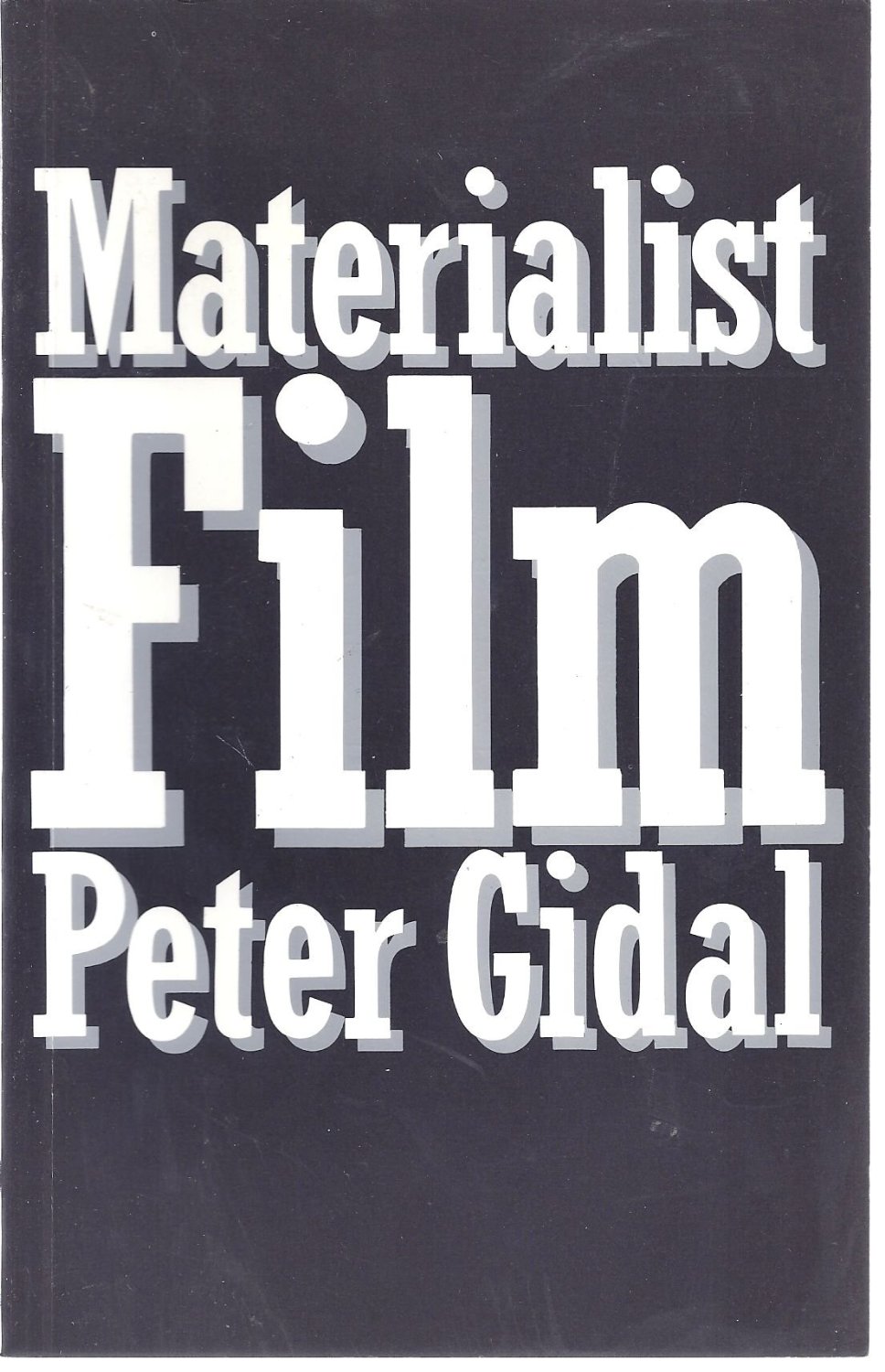Peter Gidal: Materialist Film (1989)
Filed under book | Tags: · abstraction, aesthetics, avant-garde, bourgeoisie, cinema, experimental film, film, film history, ideology, illusion, image, meaning, narrative

“A polemical introduction to the avant-garde and experimental in film (including making and viewing), Materialist Film is a highly original, thought-provoking book.
Thirty-seven short chapters work through a series of concepts which will enable the reader to deal imaginatively with the contradictory issues produced by experimental film. Each concept is explored in conjunction with specific films by Andy Warhol, Malcolm LeGrice, Lis Rhodes, Jean-Luc Goddard, Rose Lowder, Kurt Kren, and others.
Peter Gidal draws on important politico-aesthetic writings, and uses some of his own previously published essays from Undercut, Screen, October, and Millennium Film Journal to undertake this concrete process of working through abstract concepts.”
Publisher Routledge, 1989
ISBN 0415003822, 9780415003827
189 pages
via maxp
Review: Wheeler Winston Dixon (Prairie Schooner, 1990)
PDF (10 MB, updated on 2016-12-24)
Comment (0)Oliver Grau: Virtual Art: From Illusion To Immersion (2001–)
Filed under book | Tags: · art, illusion, immersion, media history, new media, telepresence, virtual art, virtual reality, virtuality

“Although many people view virtual reality as a new phenomenon, it has its foundations in an unrecognized history of immersive images. Indeed, the search for illusionary visual space can be traced back to antiquity. In this book, Oliver Grau shows how virtual art fits into the art history of illusion and immersion. He describes the metamorphosis of the concepts of art and the image and relates those concepts to interactive art, interface design, agents, telepresence, and image evolution. Grau retells art history as media history, helping us to understand the phenomenon of virtual reality beyond the hype.
Grau shows how each epoch used the technical means available to produce maximum illusion. He discusses frescoes such as those in the Villa dei Misteri in Pompeii and the gardens of the Villa Livia near Primaporta, Renaissance and Baroque illusion spaces, and panoramas, which were the most developed form of illusion achieved through traditional methods of painting and the mass image medium before film. Through a detailed analysis of perhaps the most important German panorama, Anton von Werner’s 1883 The Battle of Sedan, Grau shows how immersion produced emotional responses. He traces immersive cinema through Cinerama, Sensorama, Expanded Cinema, 3-D, Omnimax and IMAX, and the head mounted display with its military origins. He also examines those characteristics of virtual reality that distinguish it from earlier forms of illusionary art. His analysis draws on the work of contemporary artists and groups ART+COM, Maurice Benayoun, Charlotte Davies, Monika Fleischmann, Ken Goldberg, Agnes Hegedues, Eduardo Kac, Knowbotic Research, Laurent Mignonneau, Michael Naimark, Simon Penny, Daniela Plewe, Paul Sermon, Jeffrey Shaw, Karl Sims, Christa Sommerer, and Wolfgang Strauss. Grau offers not just a history of illusionary space but also a theoretical framework for analyzing its phenomenologies, functions, and strategies throughout history and into the future.”
This book is a translation of a revised and expanded version of a book entitled Virtuelle Kunst in Geschichte und Gegenwart: Visuelle Strategien, Berlin: Reimer, 2001.
Translated by Gloria Custance
Publisher MIT Press, 2004
Leonardo Books series
ISBN 0262572230, 9780262572231
430 pages
PDF (updated on 2019-10-13)
Comment (0)
